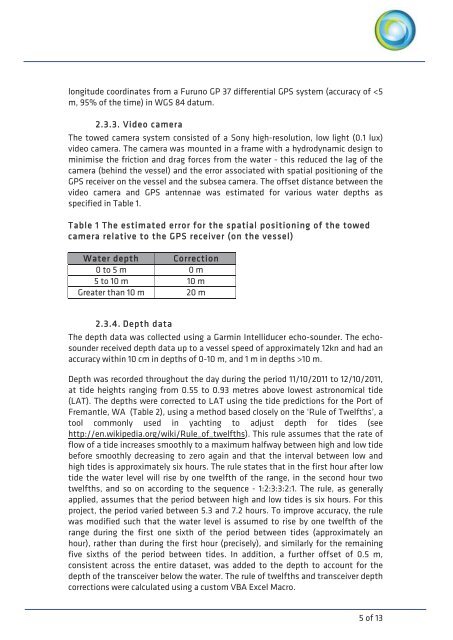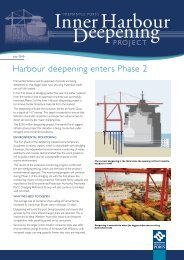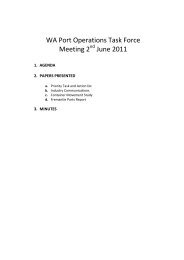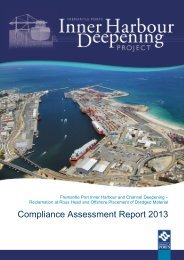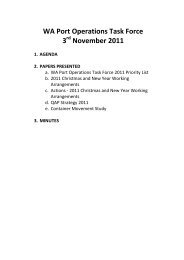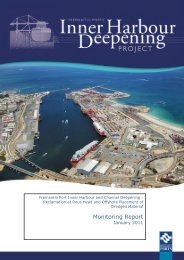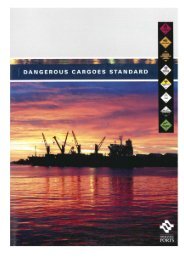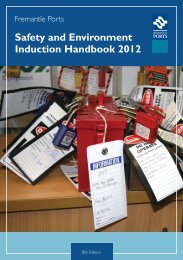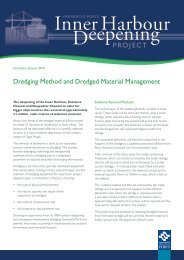Fremantle Port Inner Harbour and Channel ... - Fremantle Ports
Fremantle Port Inner Harbour and Channel ... - Fremantle Ports
Fremantle Port Inner Harbour and Channel ... - Fremantle Ports
- No tags were found...
You also want an ePaper? Increase the reach of your titles
YUMPU automatically turns print PDFs into web optimized ePapers that Google loves.
longitude coordinates from a Furuno GP 37 differential GPS system (accuracy of 10 m.Depth was recorded throughout the day during the period 11/10/2011 to 12/10/2011,at tide heights ranging from 0.55 to 0.93 metres above lowest astronomical tide(LAT). The depths were corrected to LAT using the tide predictions for the <strong>Port</strong> of<strong>Fremantle</strong>, WA (Table 2), using a method based closely on the ‘Rule of Twelfths’, atool commonly used in yachting to adjust depth for tides (seehttp://en.wikipedia.org/wiki/Rule_of_twelfths). This rule assumes that the rate offlow of a tide increases smoothly to a maximum halfway between high <strong>and</strong> low tidebefore smoothly decreasing to zero again <strong>and</strong> that the interval between low <strong>and</strong>high tides is approximately six hours. The rule states that in the first hour after lowtide the water level will rise by one twelfth of the range, in the second hour twotwelfths, <strong>and</strong> so on according to the sequence - 1:2:3:3:2:1. The rule, as generallyapplied, assumes that the period between high <strong>and</strong> low tides is six hours. For thisproject, the period varied between 5.3 <strong>and</strong> 7.2 hours. To improve accuracy, the rulewas modified such that the water level is assumed to rise by one twelfth of therange during the first one sixth of the period between tides (approximately anhour), rather than during the first hour (precisely), <strong>and</strong> similarly for the remainingfive sixths of the period between tides. In addition, a further offset of 0.5 m,consistent across the entire dataset, was added to the depth to account for thedepth of the transceiver below the water. The rule of twelfths <strong>and</strong> transceiver depthcorrections were calculated using a custom VBA Excel Macro.5 of 13


